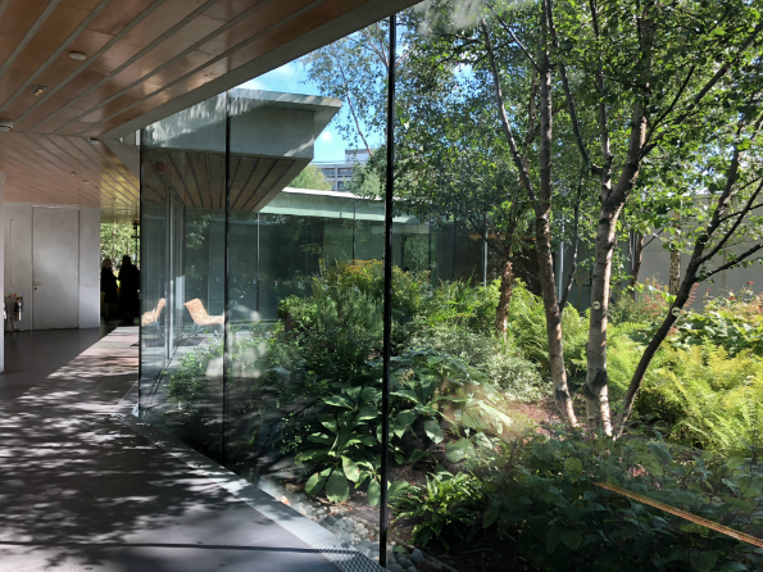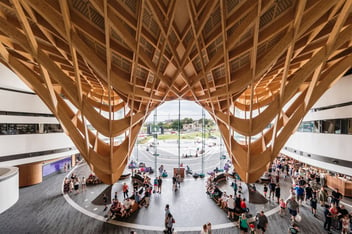Biophilia Spotlight: Maggie's Centres
Biophilia has long been a design strategy adopted by architects and designers. With our upcoming event-themed BIOPHILIA, we take a look at some great examples in the architecture and design industry.
Maggie’s Centres are predominately located in the UK and were founded by Maggie Keswick Jencks (wife of Charles Jencks, the architectural historian), in the hope of creating a new type of cancer care, one where buildings and their connection to healing were prioritised.
Over the years, Maggie’s Centres continue to showcase excellence in architecture, designed by some of the best-known architects in the world; Frank Gehry, OMA, Zaha Hadid, Steven Holl, Snøhetta, and Heatherwick Studio to name a few. Each of these architects is handed the same brief, a brief that differs greatly from what you imagine from a traditional cancer centre.
The central pillar for designing a Maggie’s Centre is your interpretation of healing architecture as well as a strong connection to nature. In most cases, this results in an evidently biophilic approach to the design. Most Maggie’s Centres incorporate the use of natural materials, often timber, large expanses of glazing that look directly onto beautifully landscaped gardens, courtyards for direct connection to the outdoors, access to natural light and plenty of communal spaces to foster human connectivity.
It’s wonderful to see how biophilic design principles can be used to improve the quality of life for those suffering from illness and their families, hopefully, we see more healthcare facilities taking the Maggie’s Centre lead, grounded in biophilic principles.






